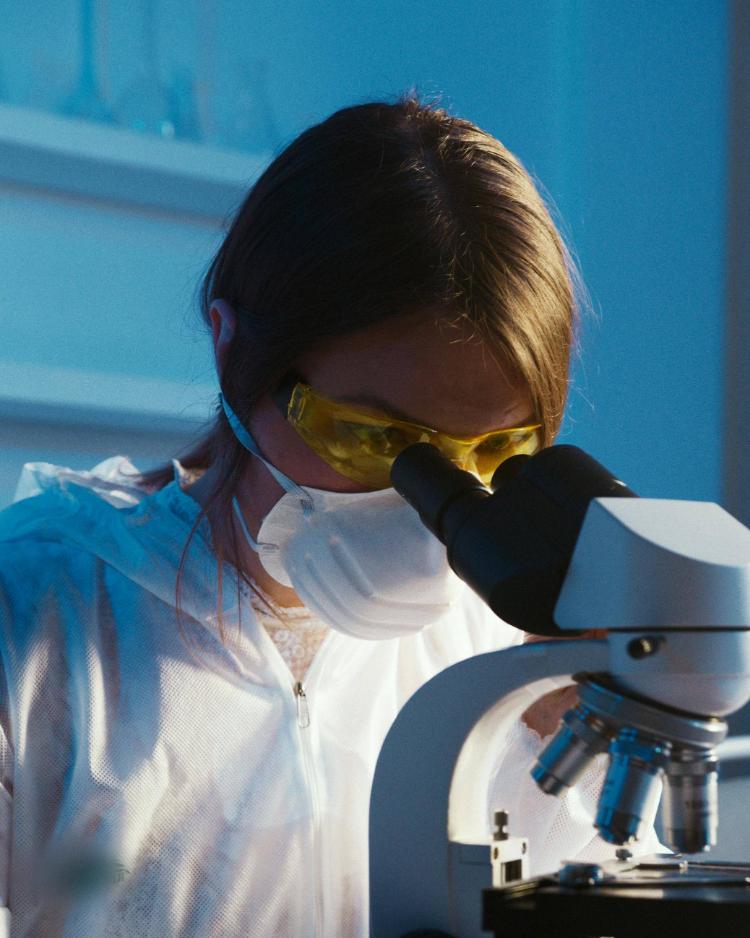Having to go through infertility treatment is something we wouldn’t wish upon anyone. At the same time, it is the pinnacle of beauty that science now gives everyone the opportunity to have the family of their dreams. There is no one definition of family, motherhood, fatherhood. Likewise, no two journeys lead down the same exact road when trying to conceive and bring a child into the world. Everything from your medical history and fertility diagnosis to your personality type and goals can factor into determining the fertility treatment that is right for you. That’s why Baby Bridge specializes in all aspects of infertility and reproductive medicine and treats everyone as their own unique person.
Fertility Treatments
Making Genes Come True
Your Individualized Infertility Treatment Plan
Our internationally recognized physicians provide simple solutions, but also combine the latest advances in IUI and IVF technology with cutting-edge protocols like those focusing on Reproductive Immunology. Our team seamlessly integrates these modern advances with “eastern” modalities like acupuncture, massage, and yoga to foster the fertile being within and improve your fertility treatment outcome.
No matter your story, we will help you find a solution that is perfectly suited for your family-building needs.
Donor Options: Third Party Reproduction
Making Babies
Donor Sperm
We work with every New York State Approved Sperm Bank to provide you with plenty of options when you are ready to choose donor sperm.
Donor Eggs
Our very own Donor Egg Program offers extensive options for your donor egg needs.
Donor Embryos
Donor embryos give those who have already explored most other options a great chance to carry and deliver a healthy baby.
Gestational Carriers
Surrogates and gestational carriers help families who otherwise can’t carry an opportunity to pursue their family building treatment.
Making Future Babies
Fertility Preservation
From focusing on your career or finishing your education, to traveling the world or finding the right partner there are many good reasons to preserve your fertility.
For others, it’s a medical necessity. For those undergoing life-saving chemotherapy, we provide fertility preservation options at a significant discount.
Freeze egg
Freeze sperm
Freeze embryos
Testing Embryo Genetics
Preimplantation Genetics Testing
Genetic Testing is a wonderful resource for many. While we actually recommend against it for some, it can be helpful for those with many embryos who want to choose the embryo with the highest odds of implanting. For people with known genetic disorders or for those looking to choose the sex of their child, genetic testing can be essential.
PGT-A
AKA PGS
PGT-M
AKA PGD
PGT-SR
AKA PGD
Goal
- Increase chances of achieving a successful pregnancy
- Reduces risk of passing on an inherited condition
- Increase chances of achieving a successful pregnancy with normal/balanced chromosome constitution
Patient population
- Those with failed IVF cycles, many possible embryos to transfer, or those looking to choose the sex of their child
- Patients at high-risk of having a child with a specific genetic disease
- Patients with a chromosomal rearrangement
Genetic Test Type
- Screens for chromosome abnormalities
- Screens for a specific gene disorder
- Screens for specific unbalanced chromosome rearrangements
Fertility Surgeries
Restoring, Improving, and Assisting Reproduction
Add On Services
Choosing the Fertility Treatment That's Right for You
People often want to know “what is the best fertility treatment. While there is no best fertility treatment, there may be a fertility treatment that is best for you at this moment. When deciding on your treatments during your consultation (or before or after) it’s important to consider many different things. There is a surprising number of reasons people come to seek fertility treatment – some of which lead down fairly straight forward treatment paths or options while others will require testing and will even factor in things like personality when choosing their treatment.
The Path of Least Resistance
Most people choose a treatment path that follows a path of least resistance. That means you do all of your testings, then you start with basic treatments and slowly move on to slightly more invasive procedures if unsuccessful with the previous. In addition to having less invasive procedures, many insurances cover these less more basic solutions while not covering the more advanced treatments.
The Fast Track
Some people with testing supportive of starting with a less invasive treatment prefer to jump straight to a treatment like IVF which offers much higher odds of success per cycle than simpler solutions like ovulation induction or IUI. Others choose to skip basic treatments out of medical necessity (ie those pursuing fertility treatments for genetic reasons), sex selection, after a sterilization surgery, or those in the LGBTQ community looking to both be involved in their child’s creation (reciprocal IVF).
The Path of Least Resistance Continued
General Progression of Fertility Treatments
Given the (slight) majority of people continue down the path of least resistance, that’s a good place to start for a more in-depth conversation and exploration of the generic progression of fertility treatments from the more simple to the progressively more complex.
The Path of Least Resistance Continued
How Testing Effects Treatment Options
The above outline of fertility treatment progression is most directly and appropriately followed after all testing has been done with all results coming back negative . . . meaning unexplained infertility. Through testing, we can gain a better understanding of appropriate treatments and potentially eliminate dead-end paths.
The above outline of fertility treatment progression is most directly and appropriately followed after all testing has been done with all results coming back negative . . . meaning unexplained infertility. Through testing, we can gain a better understanding of appropriate treatments and potentially eliminate dead-end paths.
How’s the sperm?
Sperm is half the battle and the most often overlooked component – not the case here at CNY Fertility. Knowing the quantity and quality of your sperm is vital. It can either keep your options wide open (pending female evaluation) or make many treatment options completely futile. Remember, sperm have a long way to swim so if they don’t look like they’re entering the Olympics you may want to steer clear of some basic treatment options that require the sperm to do some heavy lifting.
If sperm and female are good – ovulation induction and IUI could be great places to start.
A sperm count of under 10 million motile sperm is counter indicative for these treatments. It may be recommended to jump to IVF (with ICSI). With very little (oligospermia) or no sperm (azoospermia), it may be required to have a testicular sperm extraction or even use donor sperm.
Ovulating?
Not ovulating or having regular cycles? It doesn’t sound good, but it may actually be one of the “best,” diagnoses you could receive as treatment can be incredibly straight forward. Many with ovulation disorders conceive with simple oral medications and regular intercourse in an ovulation induction cycle. If that were unsuccessful, treatment would typically progress in line with the map above.
How are the fallopian tubes?
If the fallopian tubes are damaged the real question becomes how much or how bad? With mild damage or damage that is localized to one side then one could potentially proceed with basic treatment options or have surgery to correct the damage.
If the damage is severe enough that there becomes no hope of the egg ever passing through to meet the sperm than IVF is a great option as it completely bypasses the tubes.
If the woman has had a tubal ligation (tubes tied) they will either need a reversal or go straight to IVF.
How is the uterus?
There are two main questions here . . . are there any gross anatomical issues and how does the lining develop.
Many anatomical abnormalities or pathologies can be surgically corrected and open up most treatment options.
Lining issues can be challenging but can be helped with medications and PRP while still keeping most treatment options open.
Hormone levels . . .
Everything looking good? Great!
Things like a Low AMH, High FSH, High Estradiol, and thyroid disorders may indicate a rapid progression through basic treatments (or skipping straight to IVF). Donor eggs could also be discussed (although never pushed on you or required).
Other lab values like low vitamin D can have a drastic effect on fertility, but for that, let’s just start by taking some vitamins.
Age . . .
All things being equal, the quality of eggs and sperm decline as we age – and rapidly after the age of 35. Those on the friendly side of 35 can generally take their time progressing through treatments where those nearing 40 should get moving with IVF sooner than later.
Fast Track Continued
Other Common Reasons People Jump to “Advanced” Treatment
Insurance Coverage
As bothersome as it is, insurance coverage often dictates how people progress through treatment. Many people have IUI coverage but not IVF coverage so spend a medically unadvised time on IUIs before progressing to IVF or other treatments that appear needed. Others may have no fertility coverage which can similarly alter one’s ability to pursue treatment.
FORTUNATELY, YOU’RE IN THE RIGHT PLACE. CNY FERTILITY CHARGES 1/3 THE COST OF THE NATIONAL AVERAGE FOR MOST TREATMENTS AND COUPLED WITH OUR IN-HOUSE PAYMENT PLANS AND TRAVEL TEAM WE ARE HERE TO HELP WHEREVER YOU LIVE.






